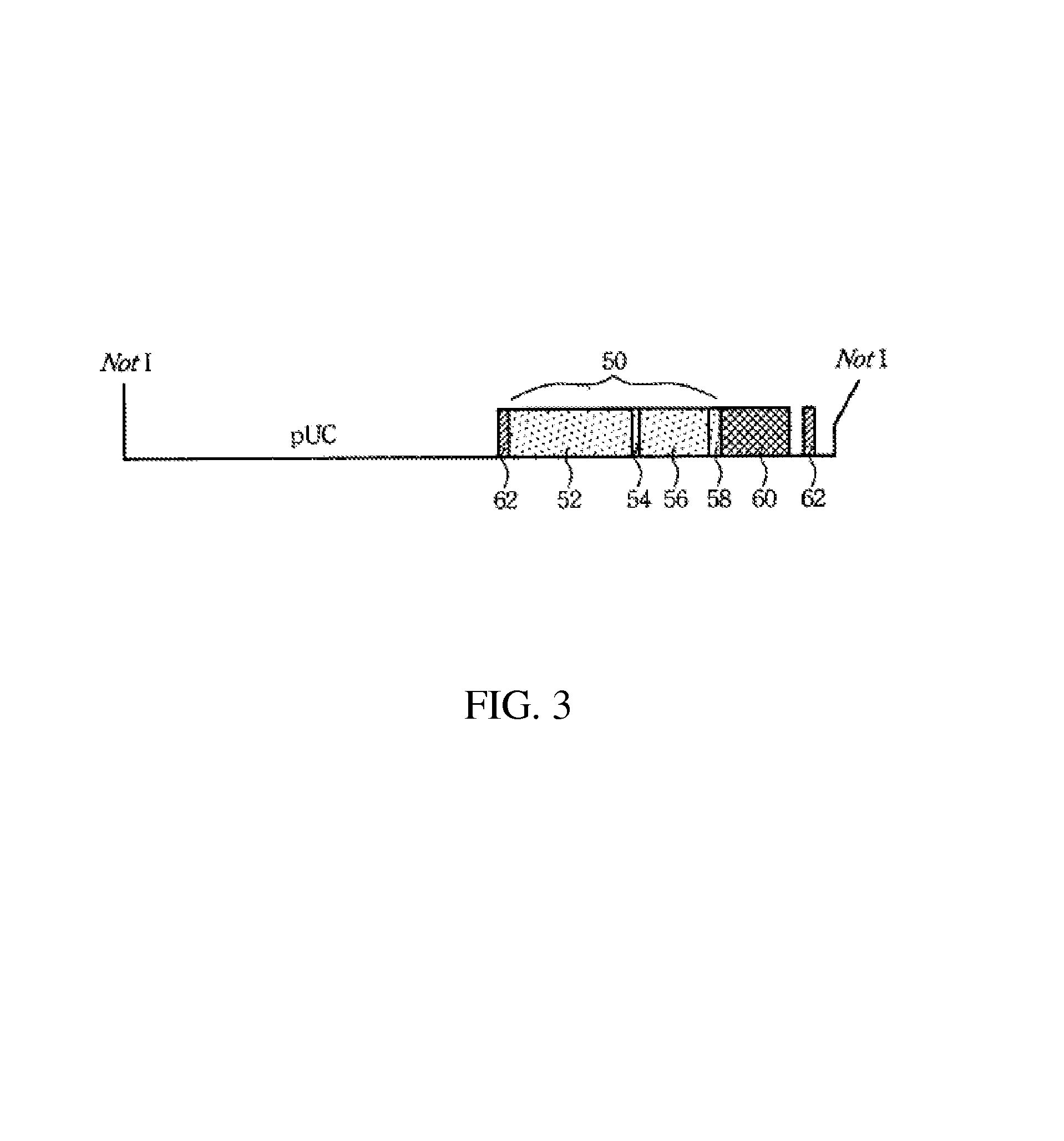Method for producing heart-specific fluorescence of non-human eukaryotic animals
a technology of eukaryotic animals and transgenes, which is applied in the field of generating transgenes of fish labeled, can solve the problems of inability to allow investigators to observe the expression of transgenes, sacrifices of valuable animals, such as mice, and inability to establish model systems labeled with heart-specific fluorescence in vivo
- Summary
- Abstract
- Description
- Claims
- Application Information
AI Technical Summary
Benefits of technology
Problems solved by technology
Method used
Image
Examples
example 1
1.01 Zebrafish Breeding
[0024]A zebrafish AB strain was cultured and maintained according to procedures described by Westerfield (1995). Embryonic stages were recorded as hpf and days postfertilization (dpf) following Kimmel et al. (1995).
1.02 Genomic DNA Extraction and Restriction Enzyme Digestion
[0025]Genomic DNA was extracted from zebrafish larvae at 48 hpf. One microgram of the extracted DNA was then added into 50 μl restriction enzyme buffer (50 mM NaCl, 10 mM Tris-HCl, 10 mM MgCl2, 1 mM DTT, pH 7.9) and cut with SpeI restriction enzyme at 37° C. The DNA sample was purified by ethanol precipitation.
1.03 Adaptor Ligation
[0026]One microgram of SpeI-cut DNA fragment and 100 pmol each of Pad1 (5′-TGCGAGTAAGGATCCTCACGCAAGGAATTCCGACCAGACACC-3′) (SEQ ID NO: 1) and PR-SpeI (5′-CTAGGGTGTCTGGTCGC-3′) (SEQ ID NO: 2) adaptors were added to a final volume of 20 μl of ligation buffer. The mixture was preheated in a GeneAmp PCR system at 70° C. for 20 minutes and then slowly cooled down to 4° ...
example 2
[0059]Procedure of this example was similar to that of Example 1. The major difference between Example 2 and Example 1 was that the gene segment encoding GFP in the plasmid construct, pICMLE, was replaced with that encoding red fluorescent protein (RFP, CLONETECH). The plasmid construct containing the gene encoding RFP had 5937 bp and was designated as pICMLR.
[0060]Referring to FIG. 6, the nucleotide sequence of the cmlc2 gene 50 includes a 870-bp segment of the 5′ upstream regulatory region 52 (454-1323), a 39-bp segment of the exon 154 (1324-1362), a 682-bp segment of the intron 156 (1363-2044) and a 69-bp segment of the exon 258 (2045-2110). This 1.6-kb segment (FIG. 2) was then fused with RFP cDNA 70 (CLONETECH) to form a cassette. The cassette was flanked on its both sides by 145-bp inverted terminal repeats 62 (260-1323 and 3128-3264, respectively) which are derived from an adeno-associated virus (AAV-ITR). Between the inverted terminal repeat 62 (3128) and the stop codon of t...
example 3
[0062]Procedure of this example was similar to that of Example 1. The major difference is that DNA sample described in Example 1, section 1.08, was microinjected into embryos of medaka. That is, the DNA segment was randomly inserted into genome in transparent embryos of medaka.
[0063]FIG. 7 showed results of microinjecting the DNA sample into embryos of medaka. Among 86 injected embryos, 51 embryos (60%) were survived at 2 dpf. 25 (50%) of these 51 survival embryos were labeled with heart-specific fluorescence.
PUM
| Property | Measurement | Unit |
|---|---|---|
| pH | aaaaa | aaaaa |
| volume | aaaaa | aaaaa |
| volume | aaaaa | aaaaa |
Abstract
Description
Claims
Application Information
 Login to View More
Login to View More - R&D
- Intellectual Property
- Life Sciences
- Materials
- Tech Scout
- Unparalleled Data Quality
- Higher Quality Content
- 60% Fewer Hallucinations
Browse by: Latest US Patents, China's latest patents, Technical Efficacy Thesaurus, Application Domain, Technology Topic, Popular Technical Reports.
© 2025 PatSnap. All rights reserved.Legal|Privacy policy|Modern Slavery Act Transparency Statement|Sitemap|About US| Contact US: help@patsnap.com



